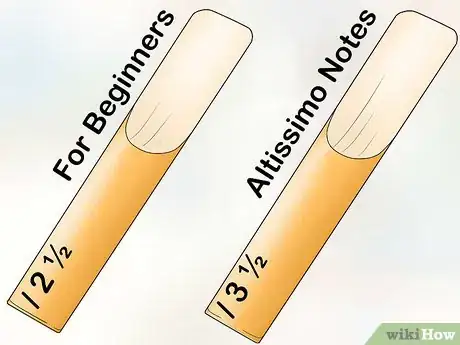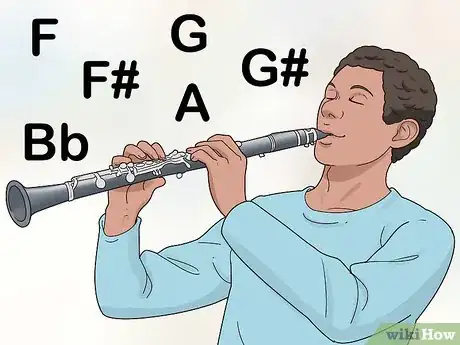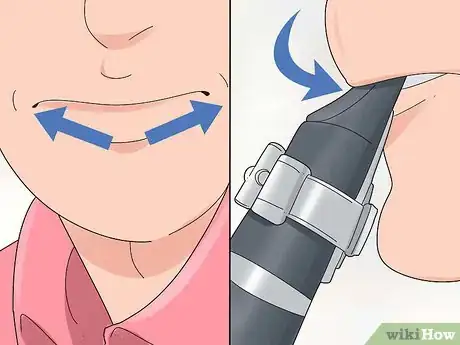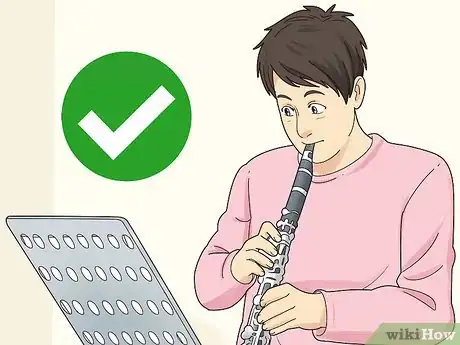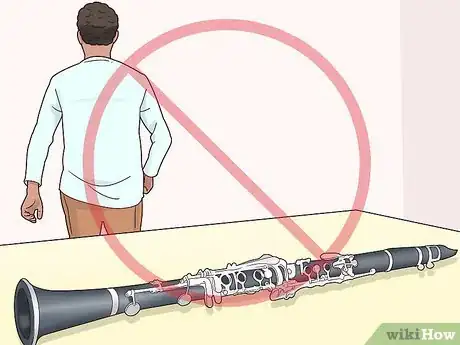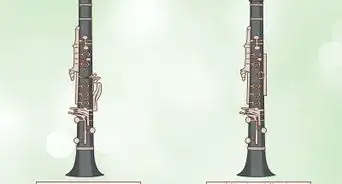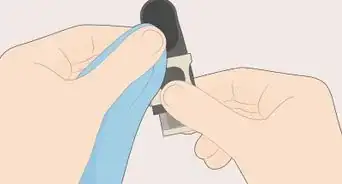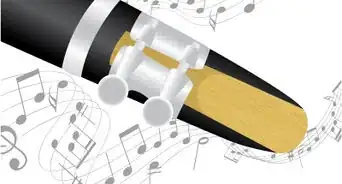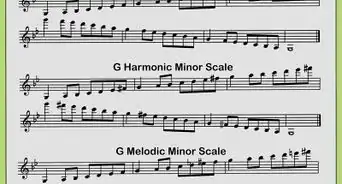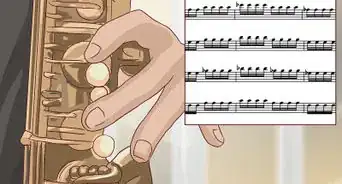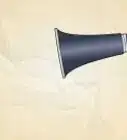X
wikiHow is a “wiki,” similar to Wikipedia, which means that many of our articles are co-written by multiple authors. To create this article, 36 people, some anonymous, worked to edit and improve it over time.
This article has been viewed 148,612 times.
Learn more...
The B flat clarinet can be a tricky instrument to play. While it's easy to get a sound on one, the challenge is in getting a good tonal" sound. While the desired sound varies depending on the style of playing, a good, rich tone is always important.
Steps
-
1
-
2Many clarinet players in band at school who participate in the top band may use a 4 too.Advertisement
-
3Have the best clarinet that you possibly can. If you're still playing your 20-year-old hand-me-down Bundy, it's time for an upgrade -- go for a good plastic or wooden clarinet. Wood generally has a very nice tone quality, but plastic clarinets can sound good as well, and they're cheaper. If you aren't sure you are going to continue playing clarinet, then don't buy a new clarinet yet. They can range hundreds of dollars for a decent one, to thousands for a professional one.If you already have a good clarinet, be sure to keep up with its maintenance. A COA (Cleaning, Oiling, Adjusting) once or twice a year is very important. If you find it difficult to put your clarinet together, then I recommend greasing it with cork grease.[2]
-
4Practice the open-throat tones. The F, F#, G, G#, A, and Bb in the staff are the open throat tones for the clarinet.[3] This means that when playing these notes, you are plugging very few (or no) holes, and are usually only opening more. The air in the clarinet is going to travel less and with barely any resonance in the clarinet. Sit up straight, and, using the diaphragm, push air out playing the open G. Try to relax the throat so it's nice and open while not losing the embouchure. This takes years of practice and muscle training.
-
5Make sure your embouchure is correct. Many players who are just starting or have never had correct instruction will make the mistake of "smothering" the reed with too much bottom lip, closing the throat to limit airflow, or any number of other mistakes. To form a correct embouchure, you should flatten your lower lip against your bottom teeth (as if you are putting on lipstick), which will flatten out your chin. Place the mouthpiece on your lower lip, rest your top teeth on it, and close up the "gaps" with your lips, in a drawstring fashion (keep the corners of your lips tight - no air should be leaking through). This prevents you from putting too much pressure on the reed and should make it easier to produce a rich, full sound.[4]
-
6Similarly, make sure you are filling the clarinet with air. While it is a small instrument, it does take some work to get the most sound and volume potential out of it. When breathing, fill up your lungs from the bottom up, and blow from your stomach, not your throat. Be sure to sit up straight and have correct posture while playing. If this is done correctly over a long period of time, you'll notice your lung capacity gradually increasing and you'll strengthen your abs. If you are having trouble feeling what this kind of breath support should feel like, try standing up with your feet together and putting your weight on your toes, to the point where you are almost leaning forward. Play something. Once you see how this should feel, you should be able to transfer the same breath support to playing while seated.[5]
-
7
-
8Keep working at it. Good tone quality doesn't happen overnight, and in the end, it all comes down to skill and dedication to the instrument
-
9Don't give up all your practice. It will definitely be worth it!
Advertisement
Community Q&A
-
QuestionWhat are some ways to avoid squeaks?
 Community AnswerMake sure that your fingers cover the right holes completely, and that they don't touch any other holes. Also, make sure your embouchure is right. Avoid biting down on the mouthpiece too much.
Community AnswerMake sure that your fingers cover the right holes completely, and that they don't touch any other holes. Also, make sure your embouchure is right. Avoid biting down on the mouthpiece too much. -
QuestionWhy do I squeak sometimes on the next note after taking a breath?
 Community AnswerThis is probably because when you breathe, you take your clarinet out of your mouth too much, and this changes your embouchure. When you place the clarinet back in your mouth, though you blow the same way, your mouth is not in the correct position and a squeak is produced. Try keeping the clarinet in your mouth in the same position when you breathe, this may help.
Community AnswerThis is probably because when you breathe, you take your clarinet out of your mouth too much, and this changes your embouchure. When you place the clarinet back in your mouth, though you blow the same way, your mouth is not in the correct position and a squeak is produced. Try keeping the clarinet in your mouth in the same position when you breathe, this may help. -
QuestionWhy does my new clarinet sound worse than the old one?
 Community AnswerYour new clarinet would be sounding worse because your old one has been played/practiced on for a while. If your new clarinet has only been played on for a little bit, it just means it has not adjusted to being played. Keep practicing on it for a while, and over time it gradually should gain a better tone quality.
Community AnswerYour new clarinet would be sounding worse because your old one has been played/practiced on for a while. If your new clarinet has only been played on for a little bit, it just means it has not adjusted to being played. Keep practicing on it for a while, and over time it gradually should gain a better tone quality.
Advertisement
Warnings
- Make sure your reeds aren't chipped and are well-aligned with the mouthpiece. Chipped reeds can produce squeaks, sharp or flat tones, and other problems with clarinet sound.⧼thumbs_response⧽
- Make sure your reed is wet and not dry. If you are squeaking a lot it could be because your reed is dry or not wet enough.⧼thumbs_response⧽
- Beware of a bad clarinet. An old, used, or damaged clarinet isn't going to have a very good tone, no matter what you do to it. A new clarinet or a very expensive overhaul is highly recommended.⧼thumbs_response⧽
Advertisement
References
About This Article
Advertisement
